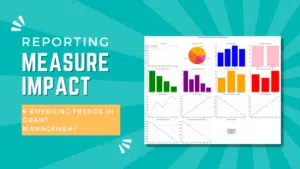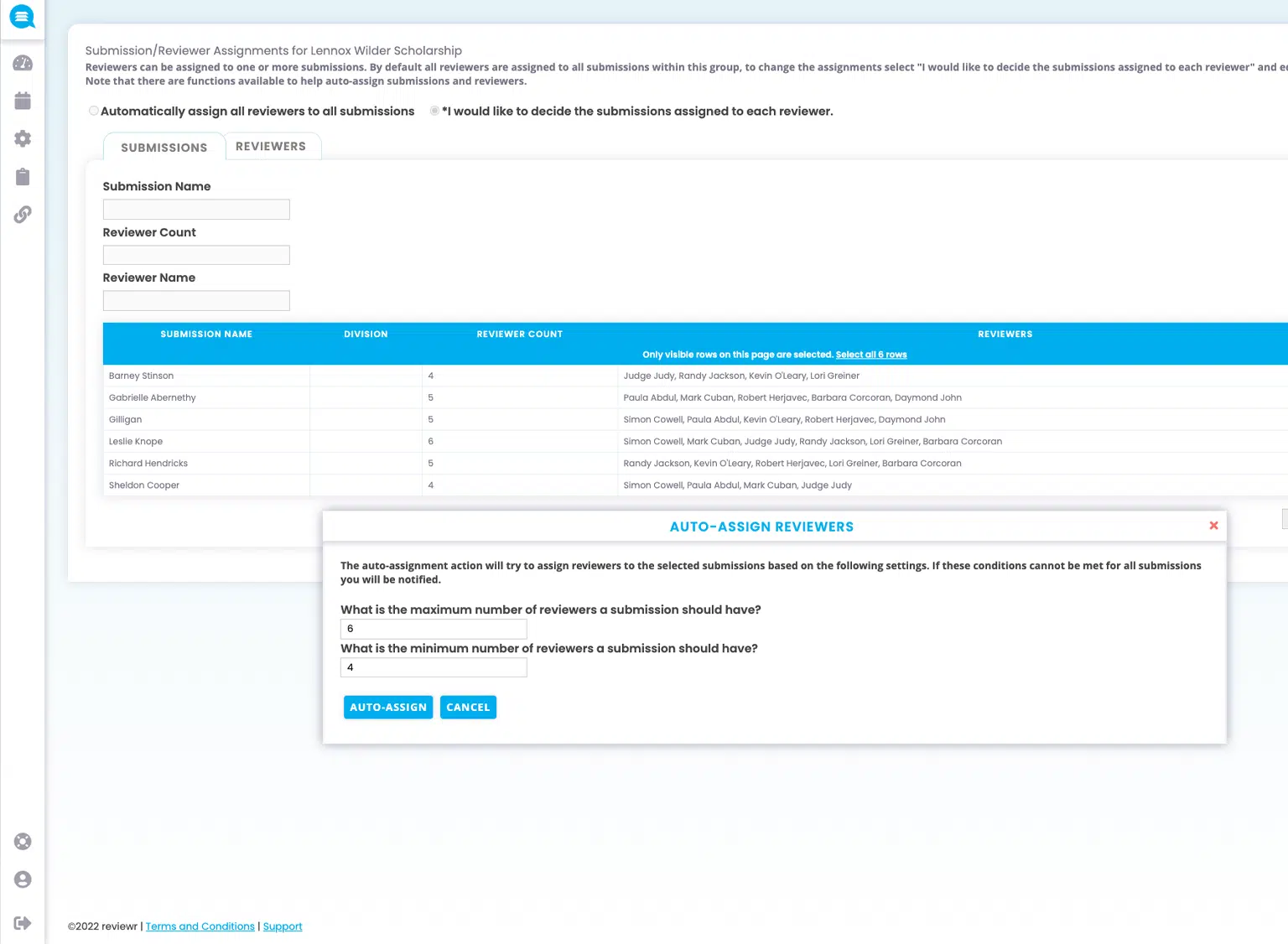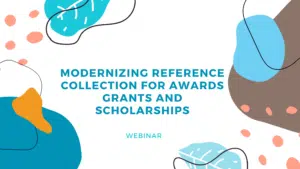
How to Measure and Report Grant Impact
Grant Impact Reporting View Interactive Tour Schedule a 1-on-1 Demo View Interactive Example How to Measure and Report Grant Impact As a
As a program manager it’s easy to focus on streamlining personal operations and efficiencies, but what if we told you that you’re maybe not as important as you think you are? Sure – we want you to stay focused on high impact activities and less time and energy with spreadsheets but ultimately program mangers make up only 35% of the total participants in scholarships, grants, awards, etc. It’s time we start to structure programs and operations around providing an engaging and impactful experience for submitters, reviewers, volunteers, board members, and other key stakeholders.
In this article and recorded webinar we dive into the 5 ways to elevate the grant review and selection process with the mindset of creating an efficient, engaging, and non-bias review workflow.
In the quest to make grant selection processes more equitable and effective, one often overlooked yet powerful strategy is the random assignment of applicants to review teams. This method, which involves distributing applicants randomly among different reviewers, plays a crucial role in minimizing bias, ensuring fairness, and enhancing the overall reliability of evaluations. By leveraging the power of randomness, grant programs can not only foster a more transparent and balanced review process but also ensure that every applicant receives a fair shot at success.
Fairness and Equity: Random assignment helps ensure that all applicants have an equal chance of being reviewed by different reviewers, reducing biases that might occur if certain reviewers were consistently assigned to specific applicants.
Reviewer Bias Reduction: It minimizes the risk of systemic biases that could arise from individual reviewers’ preferences, prejudices, or backgrounds, leading to a more balanced and impartial assessment process.
Diverse Perspectives: By mixing up the review teams, applicants are evaluated by a variety of reviewers, which can lead to a more comprehensive and diverse evaluation of each application.
Improved Reliability: Random assignment can improve the reliability of the review process by averaging out the subjective differences between reviewers, leading to more consistent and dependable outcomes.
Transparency: It increases the transparency of the review process by making it clear that no applicant is favored by being assigned to a particular reviewer or team.
Workload Distribution: Randomly assigning applicants helps to evenly distribute the workload among reviewers, preventing any one reviewer from becoming overburdened and potentially reducing the quality of their assessments.
Process Efficiency: It can streamline the logistics of the review process by simplifying the assignment mechanism, making it easier to manage and monitor.

Redacting personal information from grant applications during the review process offers several significant benefits, particularly in avoiding personal bias and preventing reviewers from being overwhelmed with irrelevant content. These benefits include:
Elimination of Personal Bias: Removing personal identifiers such as names, gender, ethnicity, and socioeconomic background helps ensure that reviewers focus solely on the merit of the application. This reduces the risk of unconscious bias influencing decisions based on personal characteristics rather than qualifications and achievements.
Enhanced Fairness: By ensuring that all applicants are judged based on the same set of criteria, the process becomes more equitable. This helps create a level playing field where applicants are evaluated purely on their merits.
Focus on Relevant Criteria: Redacting personal information helps reviewers concentrate on the content of the application that directly relates to the grant criteria. This prevents extraneous details from distracting reviewers and ensures that decisions are made based on the most pertinent information.
Improved Objectivity: When personal information is redacted, reviewers are more likely to provide objective assessments. This leads to more consistent and reliable evaluations, as personal details that could sway opinions are removed from the equation.
Consistency in Review Standards: With personal information redacted, the review process is more standardized. Reviewers are guided to apply the same standards and criteria to all applications, promoting consistency in how applications are assessed.
Encouragement of Merit-Based Selection: Redacting personal information reinforces the principle of merit-based selection, where applicants are chosen based on their qualifications, achievements, and potential rather than personal attributes or backgrounds.
Reduction of Reviewer Overload: By stripping away irrelevant personal details, the review process becomes more streamlined. Reviewers can focus on the core components of the application, reducing cognitive load and allowing for more efficient and effective evaluation.

Providing a one-stop-shop is critical to providing an engaging review and selection process. This alone will empower the review committee to provide the attention to detail and thoughtfulness that applicants deserve, while optimizing time on task to be sensitive to their volunteer workload capacities.
Streamlined Review Process: Reviewr simplifies the review process by providing a centralized platform where reviewers can easily access and evaluate all application materials without leaving the software. Embedded document viewing ensures that reviewers can assess submissions directly within the platform, reducing the time and effort required to manage physical documents or navigate multiple systems.
Enhanced Accessibility: With digital access to applications, reviewers can evaluate submissions from any device, at any time. This flexibility is especially advantageous for reviewers with busy schedules, enabling them to complete evaluations at their convenience.
Improved Organization: The software ensures that all application materials are well-organized and easily searchable. Reviewers can quickly locate specific documents, track their progress, and ensure that no application is overlooked, leading to a more efficient review process.
Consistent and Fair Evaluations: Reviewr provides customizable scoring rubrics and evaluation criteria, ensuring that all applications are assessed consistently and fairly. Reviewers can apply standardized criteria, reducing variability in the evaluation process.
Efficient Communication: The platform facilitates efficient communication between reviewers and administrators. Automated notifications and messaging features keep reviewers informed about deadlines, updates, and important information, streamlining the coordination process.
Collaborative Decision-Making: Reviewr supports collaborative decision-making by allowing multiple reviewers to access and comment on applications. Reviewers can view each other’s feedback and scores, fostering a more comprehensive and balanced evaluation process.
Data Security and Control: The platform ensures that all applicant data is stored securely, protecting sensitive information and maintaining confidentiality throughout the review process. Reviewr.com also allows administrators to control user access levels, ensuring that only authorized personnel can view or edit certain information. Additionally, the software can disable the ability to download or export personally identifiable information (PII), further safeguarding applicant data.
Time and Resource Efficiency: By automating administrative tasks, such as deadline tracking and report generation, Reviewr saves time and resources for both reviewers and administrators. This efficiency allows reviewers to focus more on evaluating the content of the applications.
Real-Time Tracking and Reporting: Administrators can monitor the progress of reviews in real-time, ensuring that deadlines are met and the process stays on track. Comprehensive reporting tools provide valuable insights into the review outcomes and help identify trends or areas for improvement.
User Support and Training: Reviewr offers extensive support and training resources to help reviewers navigate the platform effectively. This support ensures that all reviewers can make the most of the platform’s features, leading to a smoother and more effective review process.
Mathematic-based scorecard systems used to evaluate grant applications should be leveraged opposed to the more traditional deliberation approach. This system quantifies evaluation criteria, transforming subjective judgments into objective, numerical scores. Unlike traditional methods, which can be influenced by personal biases and inconsistencies, mathematic-based scorecards ensure that each application is reviewed fairly and consistently. By leveraging these scorecards, judges can assess applications based on standardized criteria, ensuring that every applicant is measured against the same objective standards.
Identifying trends in judging behavior is crucial for maintaining the integrity and effectiveness of the grant evaluation process. Reviewr’s analytics tools can detect patterns in how individual judges score applications, revealing tendencies to score higher or lower than the average.
Consistency and Fairness:
Efficiency:
Accountability:
Improved Decision-Making:
Comprehensive Evaluation:
Enhanced Communication:


Elevating the grant review and selection process is crucial for ensuring fairness, efficiency, and engagement for all stakeholders involved. By adopting strategies such as the nominator/nominee workflow, random distribution of submissions, redaction of personal information, easy access to applicant deliverables, and leveraging quantitative scoring with result normalization, programs can significantly enhance their operations. These methods not only minimize bias and improve reliability but also streamline the process, making it more manageable and transparent. Embracing these best practices ensures that every applicant is evaluated on their merits, fostering a more equitable and effective grant program.

Grant Impact Reporting View Interactive Tour Schedule a 1-on-1 Demo View Interactive Example How to Measure and Report Grant Impact As a

Reference Collection View Interactive Tour Modernizing Reference Collection for Awards Grants and Scholarships In the competitive landscape of awards, grants, and scholarship
